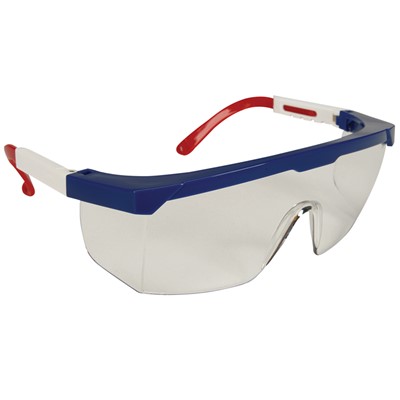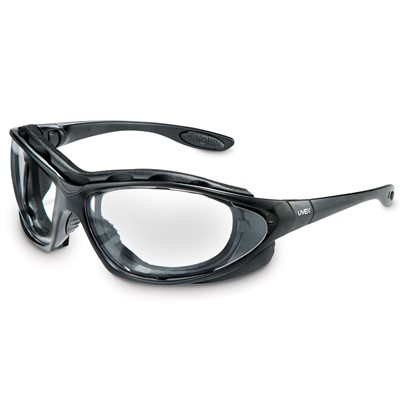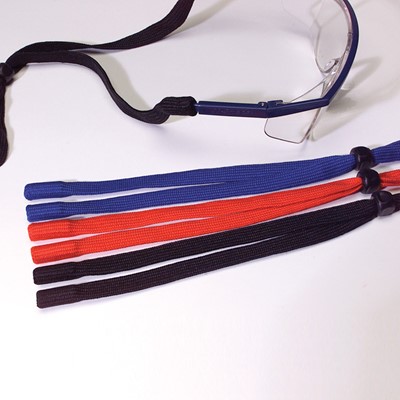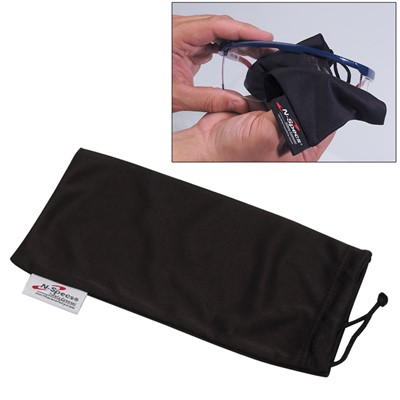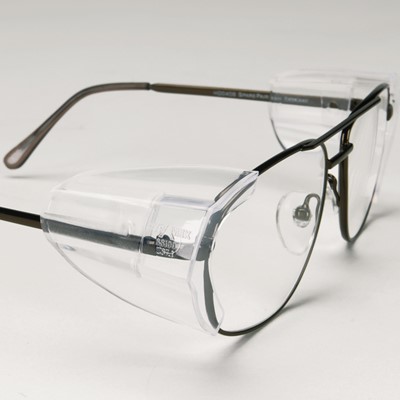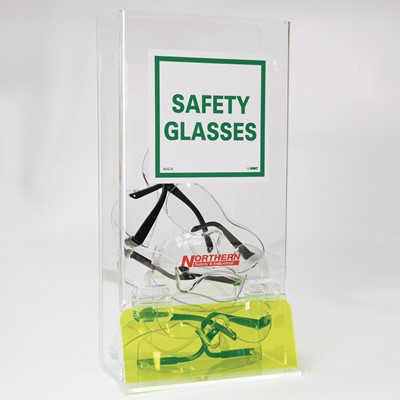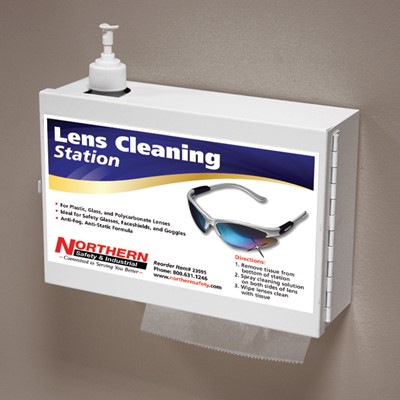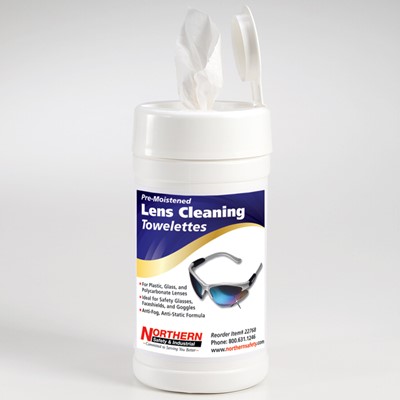Eye injuries cost US employers millions of dollars in lost time, hospital bills, and workers' compensation costs annually. Fortunately, implementing a safety eyewear program can help.
As with any piece of safety equipment, you need to know what what hazards are present. For example, you may need protection from flying particles, dust, or splash hazards. This will help you decide whether you need safety glasses or goggles.
Choosing Safety Glasses
Style
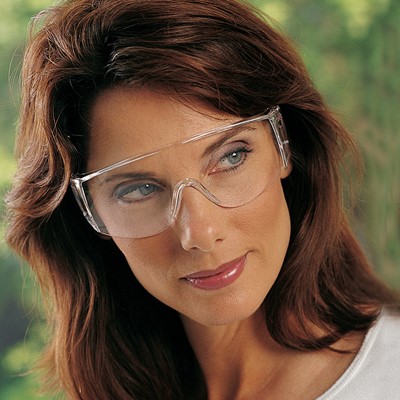
Single Lens
Provides a wide field of vision.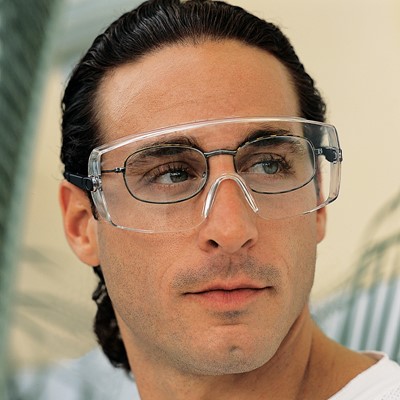
Over The Glass
Designed to be worn over prescription glasses.
Dual Lens
Closely resembles fashion eyewear.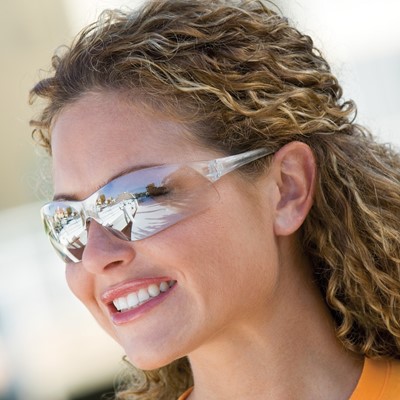
Visitor
Economical eyewear protects visitors.Frame Features
It's easy to ensure compliance when safety eyewear fits your workers properly. Choose from adjustable, cushioned, or interchangeable temples, assorted nosepieces, flexible frames, smaller sizes, and much more!
Adjustable Temples
Allows length adjustments for comfort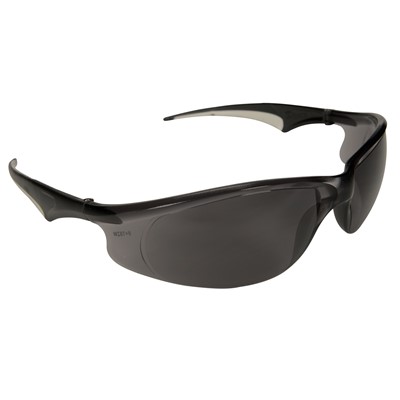
Soft-Fit®
Soft, pliable rubber temples ensure a non-slip fit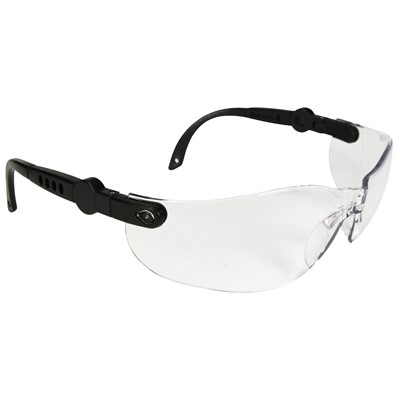
Ratcheting Temples
Provides pivoting of the lens for optimum coverage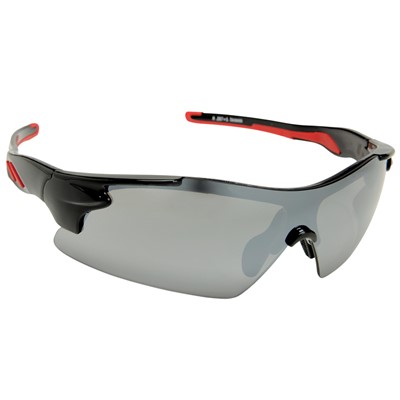
Cushioned Temples
Padded ends relieve pressure points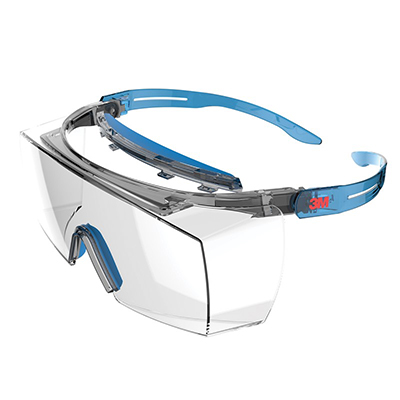
Browguard
Provides additional protection against impact, dirt, and sweat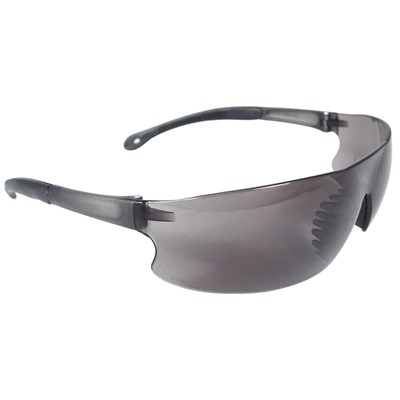
Nosepiece
Rubber nosepieces relieve pressure points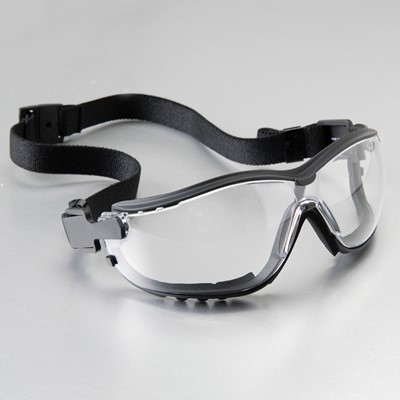
Interchangeable
Unique temples allow safety glasses to become dust gogglesFoam Lining
Soft padding helps seal out dust and debris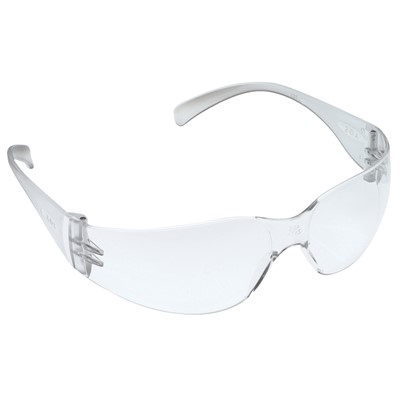
Flexible
Tough frames stand up to rough handlingLenses
Safety glasses feature polycarbonate lenses that protect against UV rays and meet ANSI Z87+ impact resistance standards. In some cases, manufacturers will put eyewear lenses through additional testing to meet Military VO ballistic standards. These tests can represent impact energy up to 7 times greater than that of ANSI standards.
A wide variety of lenses are available for protection indoors, outdoors, and in special environments. Reader safety glasses are also available and provide eye protection while enhancing vision for reading and detail work.
Shades, Colors & Tints
Safety glasses feature polycarbonate lenses that protect against UV rays and meet ANSI Z87+ impact resistance standards.
A wide variety of lenses is available for protection indoors, outdoors, and in special environments. Reader safety glasses are also available and provide eye protection while enhancing vision for reading and detail work.
Indoor / Outdoor
Great for a variety of lighting conditions, indoors and outdoorsMirrored
Ideal for outdoor work and provides anti-glare protection
Spectrum Control Technology
Reduces ultraviolet (UV), infrared, or blue light radiation hazards around welding sitesAmber
Reduces haze and blue light for brighter, clearer visionOrange
For low light conditions; provides enhanced contrastGreen Shade 3.0 and 5.0
For use around welding, brazing, or cutting applications. Does not provide enough protection for performing welding work.
Vermillion
Enhances contrast for examining metal and glass productsBlue
Ideal for work conditions with sodium-vapor lighting and excessive glare
Polarized
Provides superior glare control for bright, sunny conditionsEspresso Brown
Use outdoors where sunlight and glare cause eye fatigue and strain
Photochromic
UV reactive lenses darken in bright outdoor lightGray
Use outdoors where sunlight causes eye strainCoatings
Lens coatings help ensure clear visibility and longer use.
Anti-Fog
Minimizes fogging in a variety of working conditions for better visibilityHard Coat
Resists scratches for longer wear3XP™
Proprietary coating provides 3x the strength and protection and lasts 3x as long of typical anti-fog coatingsGoggles
If you're looking for additional protection against wind, dust, or liquid splash, goggles may be what you need. Like safety glasses, goggles have impact-resistant lenses and strong frames, but are designed to provide a seal around the entire eye area and protect against a variety of hazards. In addition, many goggles will fit comfortably over prescription eyewear. Goggles with protective cushioning around the frame deliver additional comfort, but protect against dust and dry particulates only. They should not be used where there is a threat of splash.
Venting
Venting refers to how the air is circulated over the interior surface of the lens. Goggles are available with two venting options, direct and indirect. Unvented goggles are also available for clean room applications.
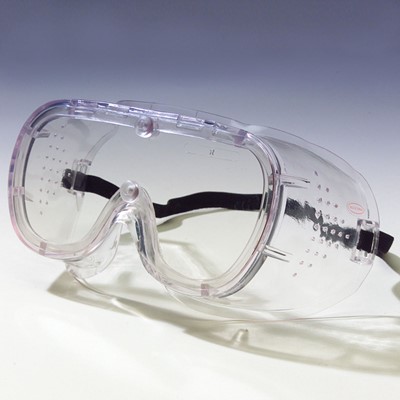
Direct Venting
A series of holes allow a cool air flow while protecting against dry particulates.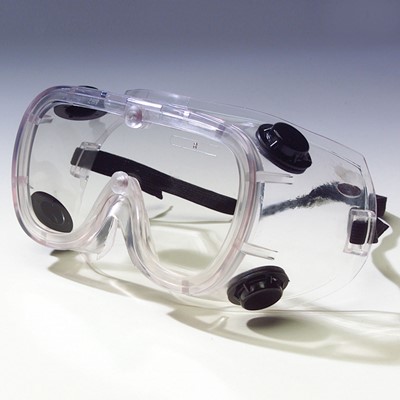
Indirect Venting
Channels the air through an indirect path to prevent splash infiltration.Accessories
Accessories for safety glasses make it easier to get the most out of your eye protection.
Eyewear Retainers
Eyewear neck cords make it easy and convenient to keep your safety glasses close at hand.Eyewear Cases & Visor Clips
Cases and visor clips protect your safety glasses from scratches and breakage when they're not in use.Sideshields
Sideshields provide limited side protection for prescription glasses & are available in clip-on or slip-on styles.Dispensers
Clear acrylic dispensers provide convenient access to safety glasses.Lens Cleaning Products
Keep your field of vision clear with a supply of lens cleaners. Choose a lens cleaning station to keep in a central location, a supply of towelettes to keep in your pocket, or solutions and tissues.
Stations
Self-contained stations offer the convenience of having the cleaning solution and tissues in one central location.Solutions & Tissues
In addition to convenient stations, solutions and tissues are available separately.Towelettes
Extremely handy towelettes are pre-moistened, individually wrapped, and often packaged in a convenient dispenser box.More Information
OSHA 29 CFR 1910.132 provides general requirements for personal protective equipment and 29 CFR 1910.133 provides requirements for eye and face protection.
ANSI Z87+ provides criteria on the description, general requirements, testing, marking, selection, care, and use of personal eye and face protection to minimize or prevent injuries, from such hazards as impact, non-ionizing, radiation and injuries from chemical exposure in occupational and educational environments including, machinery operations, material welding and cutting, chemical handling, assembly operations, and more.
CSA standard Z94.3 applies to eye and face protection used in all occupational and educational operations or processes involving hazards to the eyes or face.
Questions about Eye Protection?
Call our knowledgeable Technical Support Department at 1-800-571-4646, 8 am - 5 pm ET, Monday - Friday, or fill out the form below:


